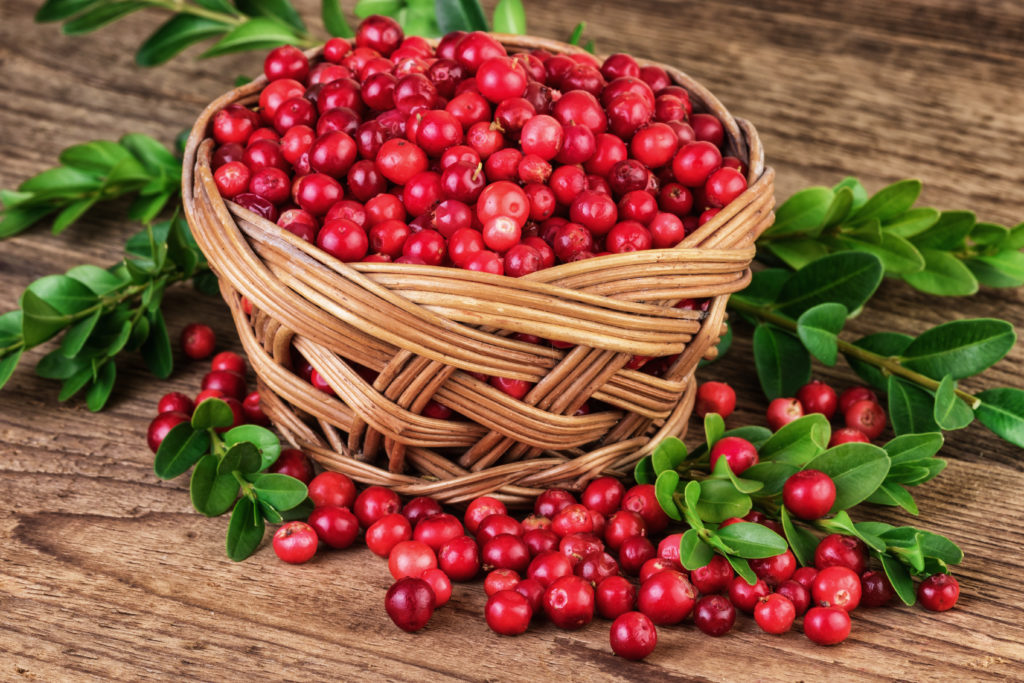Interaction between cranberry and bacteria discovered
The large-fruited cranberry is better known under its English name of Cranberry. The relatives of the blueberry and cranberry contains plenty of vitamins and minerals. The berry is said to have a healing effect on urinary tract infections. The scientific evidence was lacking to date. Now a canadian research team has demonstrated, in fact, an interaction between Cranberry extract and bacteria.
Canadian Researchers at the McGill University in Montreal wanted to find out in the course of a study, whether the ingredients of the Cranberry in fact act against bacteria. They brought the bacteria in the laboratory with Cranberry extract in contact and documented the reactions. The results were amazing: The berry ensured that the cell walls of the pathogens diluted, and they were more susceptible to antibiotics. The study was recently presented in the journal “Advanced Science”.

Cranberries to the test
The global spread of antibiotic resistance has set back humanity by decades in the fight against bacterial infections. The excessive use of antibiotics in medicine and in livestock breeding has led to the infectious diseases that were previously well treated, again often fatal. On the search for new drugs a canadian research team from the natural healing known anti turned to bacterial properties of the Cranberry to assess scientifically whether the said effect can be detected.
Cranberries full of substances and healthy content
Cranberries are in North America, is extremely popular for their tart taste and for its healthy ingredients. They are rich in Vitamin C, Provitamin A, Vitamin B6, Vitamin K, iron, calcium, potassium, Magnesium, sodium and folic acid. They also contain secondary plant substances such as polyphenols and anthocyanins. In Germany, the berry is more of a Exotic car, enjoys increasing popularity and is in every major supermarket. In addition to the healthy content of the large-fruited moss materials berry, but still a very different effect. It acts on bacteria, such as the canadian research group of McGill University showed.
Antibiotics makes bacterial pathogen is resistant
The researchers wanted to find out more about the molecular properties of the berry by treated different strains of bacteria with Cranberry extract. The selected bacteria (Proteus mirabilis, Pseudomonas aeruginosa and Escherichia coli) are common causative agents of urinary tract infections, pneumonia and Gastroenteritis. Also, the bacteria are known to often form of resistance, if you come up with antibiotics in contact. “If we treat bacteria in the laboratory with an antibiotic, you will be in the course of time-resistant,” reported the lead author, Nathalie Tufenkji in a press release of the study results.
The triple antibacterial effect of Cranberry
The laboratory analyses showed that Cranberry acted in three ways to the bacteria. The extract made of the bacterial cell wall more permeable to the antibiotic. The Cranberry substance to disturb a mechanism of the bacteria, the pathogens try to get rid of harmful substances. In addition, the Cranberry-active ingredient prevented the emergence of resistance. “When we treated the bacteria at the same time with an antibiotic and the Cranberry extract-has developed no resistance”, concrete Tufenkji. These results have made the researchers very surprised.
The results of the research Overview of
After a Cranberry extract effect on the tested bacteria, and was able to get the antibiotic easier to get into, at the same time, the bacteria had more difficulties, to get rid of and could make no resistance. Antibiotics showed so well in low doses to be more effective. “We see this as an important opportunity,” emphasises the research Director.
Where is the effect?
“The interaction is produced by molecules, which are referred to as proanthocyanidins,” explained Professor Éric Déziel, a Co-author of the study. “There are various types of Proanthocyanidins, and you work together to achieve this effect on the bacteria.” In a further study, the Team now wants to find out the optimum composition of the proanthocyanidins, which enables maximum synergy with antibiotics.
Natural medicine and modern research Hand-in-Hand
This is the second study within a short period of time, which examines the anti-bacterial effects of the Natural medicine known. Recently, an American research team substances of natural healing under the magnifying glass, which were used in the civil war from lack of drugs against wound infection. For more information, read the article: Traditional plant medicine as an anti-bacterial miracle cure again discovered. (vb)
